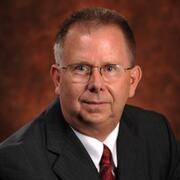Have questions about this report? Ask the author(s).
The labor market in the United States today is extremely tight. The latest data suggest that there are approximately 4 million more job openings than the number of unemployed workers actively seeking employment — this figure had been as high as 6 million in 2022. While some of this shortfall is likely pandemic related, the number of job openings exceeded the number of unemployed workers actively seeking employment in the two years prior to the onset of COVID-19, for the first time since the beginning of the job openings data in 2000.
This report considers whether an expansion of the working-age population via reform in immigration policy is appropriate, by examining the literature on the net benefits of immigration and then focusing on four key worker groups: construction, food, care, and STEM (as a proxy for advanced manufacturing and green technology). The analysis determines whether labor shortages prevail in each of the worker groups and whether immigrants of various educational attainment levels might fill any observed supply/demand imbalances over the next decade.
An extensive literature exists on the net benefits of immigration; the net benefit to the native population is referred to as the “immigration surplus.” At issue are considerations of overall economywide benefits versus benefits to native workers, whether net benefits accrue to business owners or workers, and fiscal implications. Perhaps unsurprisingly, the literature suggests that the strongest case for immigration is if policy focuses on immigrants that are highly educated and skilled. However, a case can also be made for admitting low-skill immigrants if this is done in a way that does not generate a net fiscal burden for the country. One possibility would be through legally enforceable temporary work visas.
The concept of a persistent labor market “gap” is inconsistent with the neoclassical notion of labor market responses and wage flexibility since markets respond to wage pressure. This is clearly happening in today’s labor market, though not at a pace that is satisfactory to all participants. Shortages present in portions of the economy can conceptually be eliminated over time with relative wage adjustments and the acquisition of requisite skills. Still, it is apparent that gaps can prevail as these adjustments occur — regional preference or other frictions may impede adjustments. Of course, increases in labor costs have implications for business owners and consumers as the markets respond to wage pressures.
In order to understand labor market conditions in the four worker groups, the current literature and posted industry reports were examined. Then a quantitative analysis was undertaken using forecasts of employment in each of the four worker groups and projections of the working-age population, overall and for six categories of educational attainment. The results provide a glimpse at where labor gaps may exist, serving as a guide to understanding which worker groups might benefit the most from immigration reform.

After completing his undergraduate degree in economics at Wake Forest University, Kent received his Ph.D. in economics from Rice University in 1979. He was an assistant professor at ASU from 1978 to 1983. After leaving the university for seven years, during which he worked in the research department of the Federal Reserve Bank of Dallas, he returned to ASU to teach in 1991. He joined ASU’s L. William Seidman Research Institute in 1999.

Dennis received a B.A. in economics and mathematics from Grand Valley State University, a M.S. in economics from Michigan State University, and a Ph.D. in economics from Michigan State University in 1978. He has served on the faculty of the Department of Economics at ASU since 1979, as director of ASU’s L. William Seidman Research Institute (2004-24), and as the director of the Office of the University Economist since 2005.

Dr. Jurado earned a Ph.D. in economics from Brown University in 2021. He has previously worked as an economist at Banco de México’s research division, and as a postdoctoral research fellow at Carnegie Mellon University. Dr. Jurado joined the Seidman Research Institute in May 2023.

Examines Arizona state government finance over time; compares Arizona to the nation and to other states on combined state and local government finance. Investigates public education finance and educational outcomes. Considers public-sector needs and suggests ways to boost revenue.

Summarizes migration data by state from three sources: the Internal Revenue Service, the American Community Survey, and the University of Wisconsin.
EXECUTIVE SUMMARY

Examines the determinants of the locations of high-tech clusters in the United States. Summarizes the development of high-tech activities in Arizona, Metro Phoenix, and Metro Tucson relative to selected states and metropolitan areas.
…